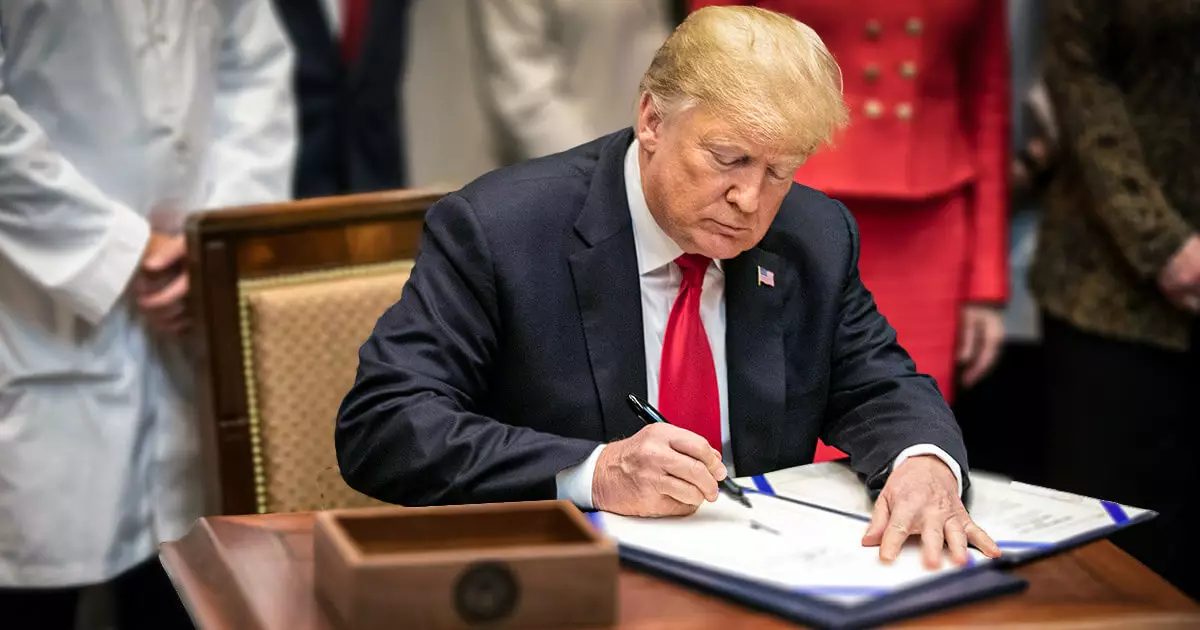On January 23rd, President Donald Trump took a significant step in the realm of digital finance by signing an executive order that established the Presidential Working Group on Digital Asset Markets. This initiative marks a pivotal moment not only in shaping U.S. policy around cryptocurrencies but also in exploring innovative avenues for their integration into the broader economic landscape. The primary aim of this group is to provide strategic direction regarding legislation, regulatory frameworks, and the promotion of innovation in the crypto industry, which has witnessed exponential growth in recent years.
Creation of a Regulatory Framework
One of the foremost responsibilities outlined in the executive order is the formulation of a comprehensive regulatory framework. The working group will focus on solidifying guidelines that govern various digital assets, including stablecoins. This endeavor is aimed at facilitating a more structured environment conducive to innovation, to ensure that the U.S. remains at the forefront of the digital asset revolution. By establishing clear regulations, the group hopes to mitigate uncertainties that have previously deterred potential investors from entering the crypto space.
Another groundbreaking aspect of the executive order is the proposal for a national digital assets stockpile, primarily centered around Bitcoin (BTC). This initiative signifies a strategic shift in how the U.S. government intends to engage with cryptocurrencies. According to insights provided by Alex Thorn from Galaxy Digital, the stockpile denotes a holding strategy rather than a direct investment approach. This could potentially position the U.S. as a key player in the global crypto market. Current estimations indicate that the government already possesses a small amount of various cryptocurrencies, underscoring a nuanced approach to digital finance.
Collaborative Efforts Across Agencies
For the implementation of these initiatives, the executive order emphasizes the necessity for collaboration among various governmental branches. High-ranking officials, including the Secretary of the Treasury and the Chairman of the Securities and Exchange Commission, will be tasked with ensuring cohesive efforts across agencies. This multi-agency coordination is crucial for aligning objectives and fostering a well-rounded approach to digital asset regulation.
Notably, the executive order explicitly prohibits any federal agency from advancing the creation of Central Bank Digital Currencies (CBDCs). This ban raises critical questions regarding the role of governmental entities in shaping the future of digital currency. Critics argue that the absence of a federal framework for CBDCs could hinder the U.S.’s ability to compete with other nations that are actively developing their own digital currencies.
Rescinding Previous Administration Policies
In addition to laying the groundwork for new policies, the executive order effectively nullifies previous directives concerning digital assets issued by the prior administration. This decision highlights a significant transition in approach, where the new guidelines are positioned not just as a means of regulation but as a reflection of a renewed commitment to economic freedom and innovation in the digital realm.
President Trump’s executive order represents a transformative initiative that could redefine the trajectory of digital assets in the United States. By prioritizing regulatory clarity, establishing a national stockpile, and fostering interagency collaboration, the government aims to not only support the growth of digital currencies but to also embrace a more innovative financial future. The implications of this order are likely to resonate throughout the industry, shaping policy and investor perceptions for years to come.


















